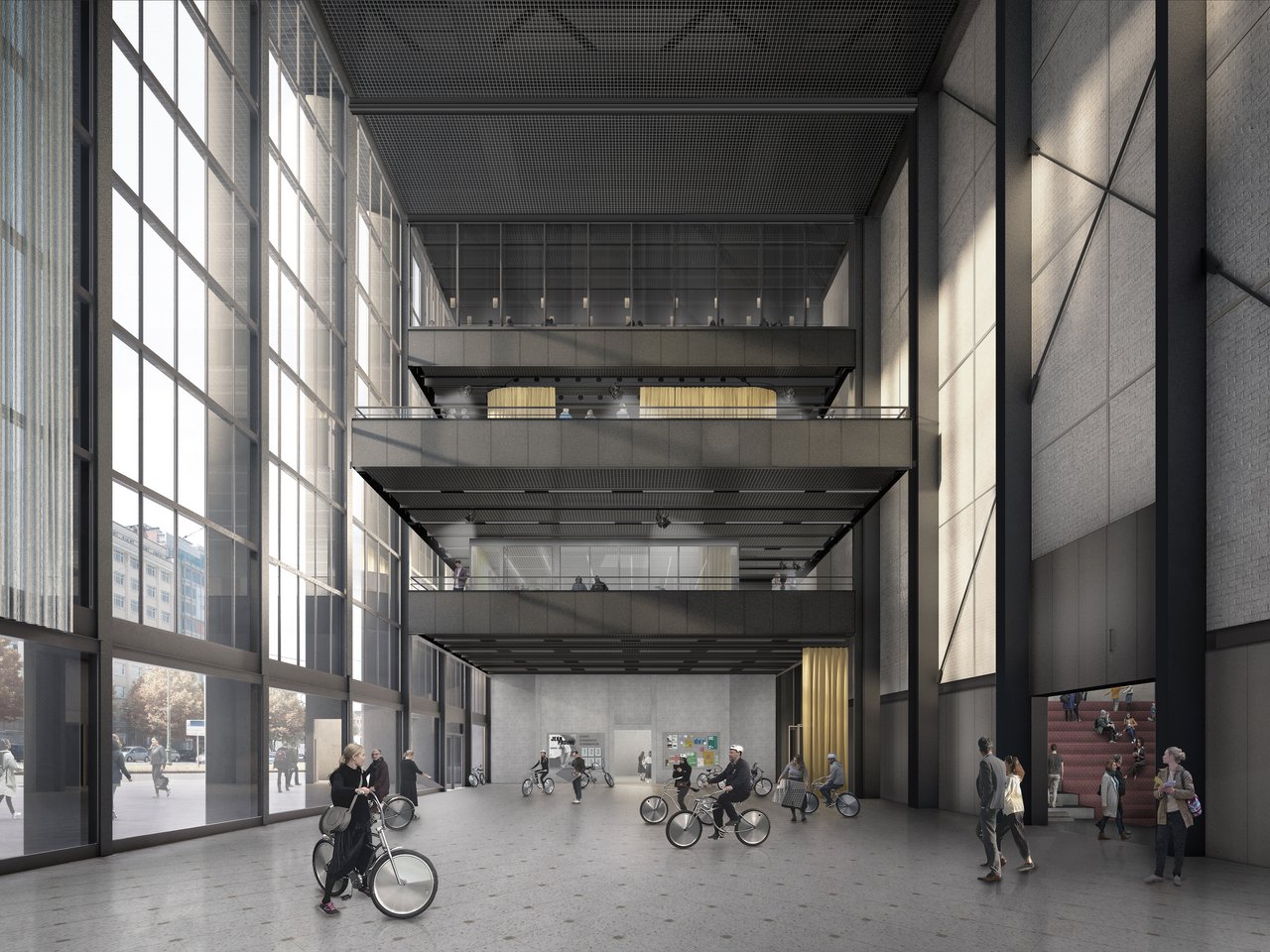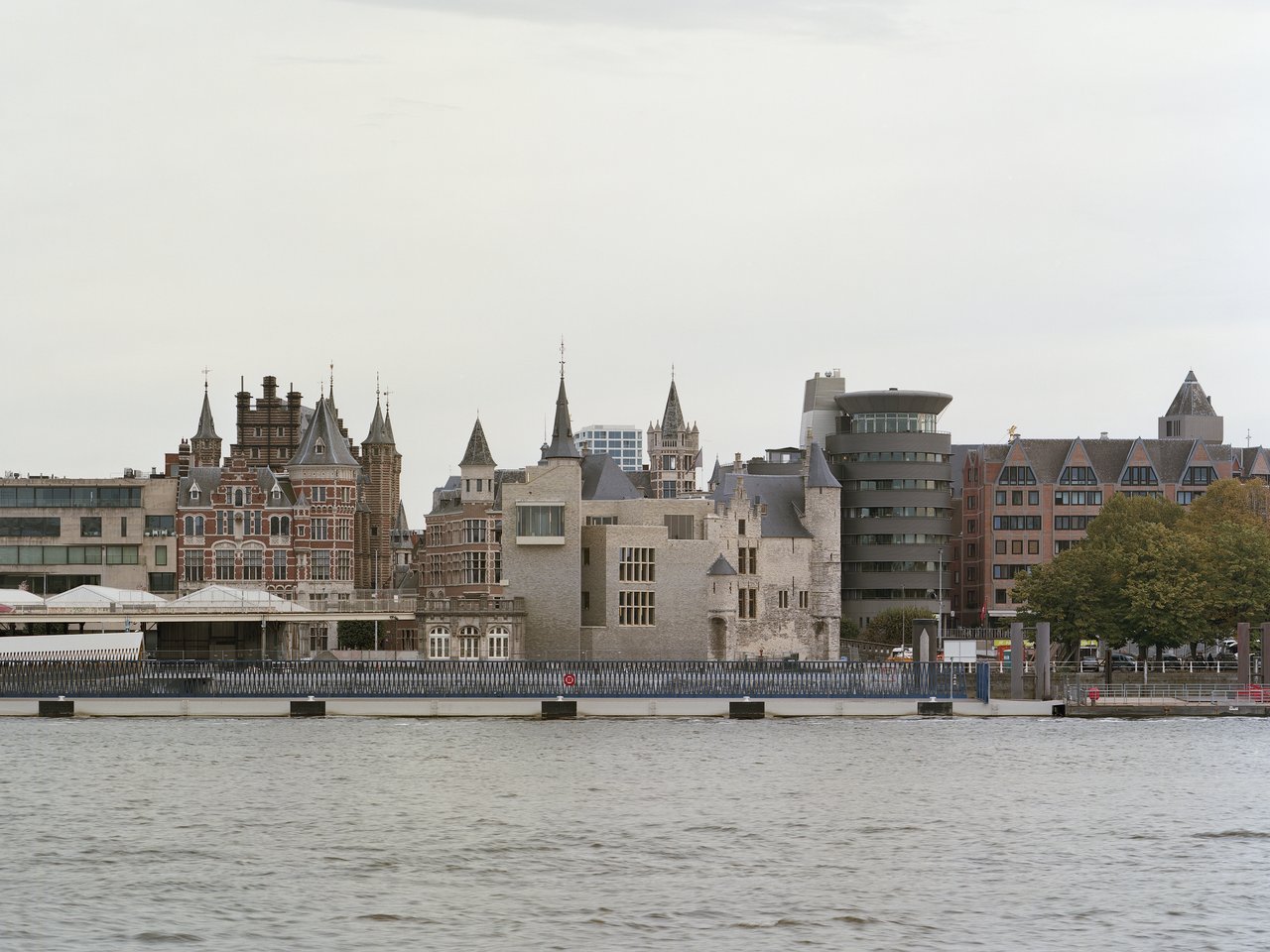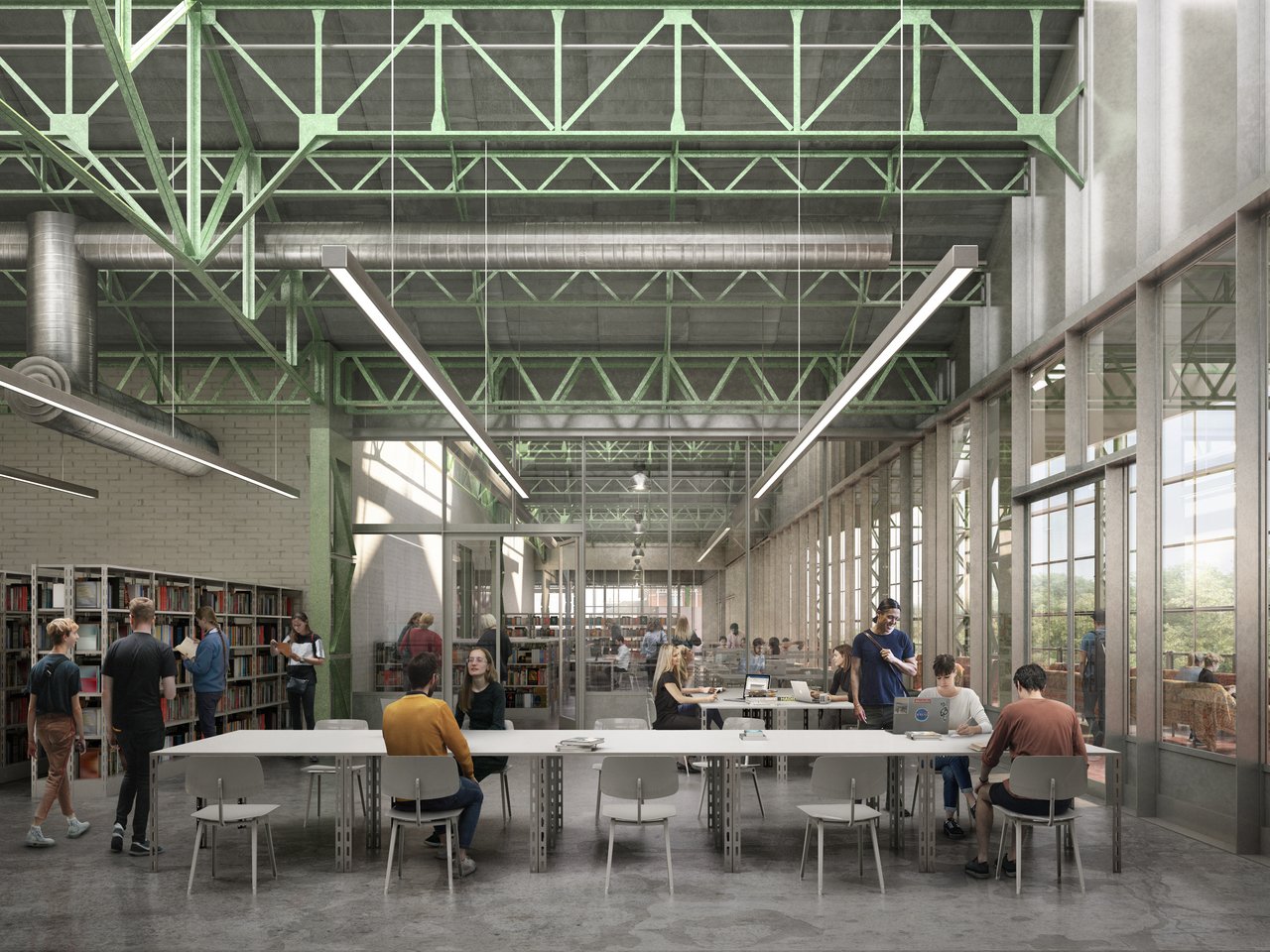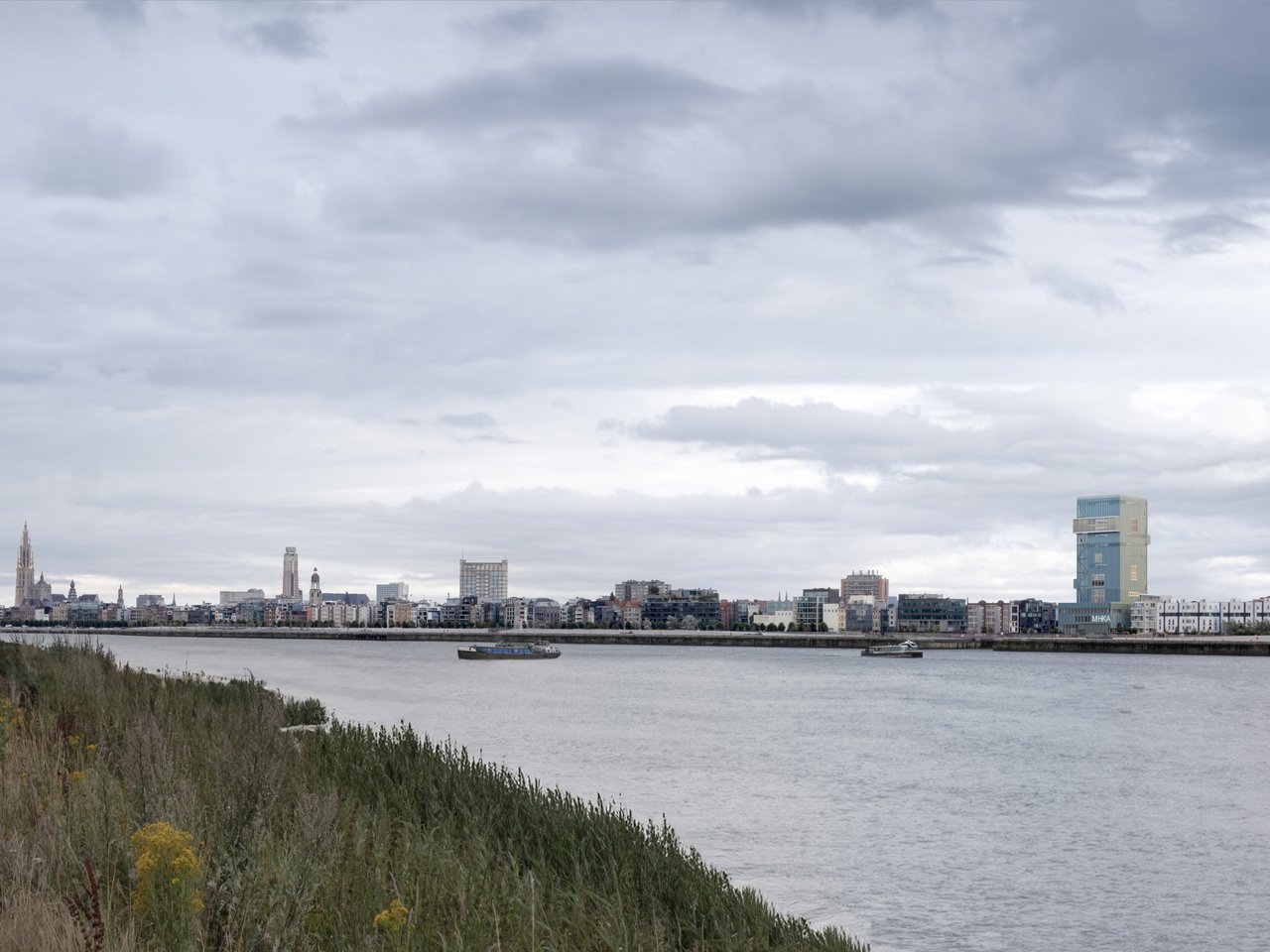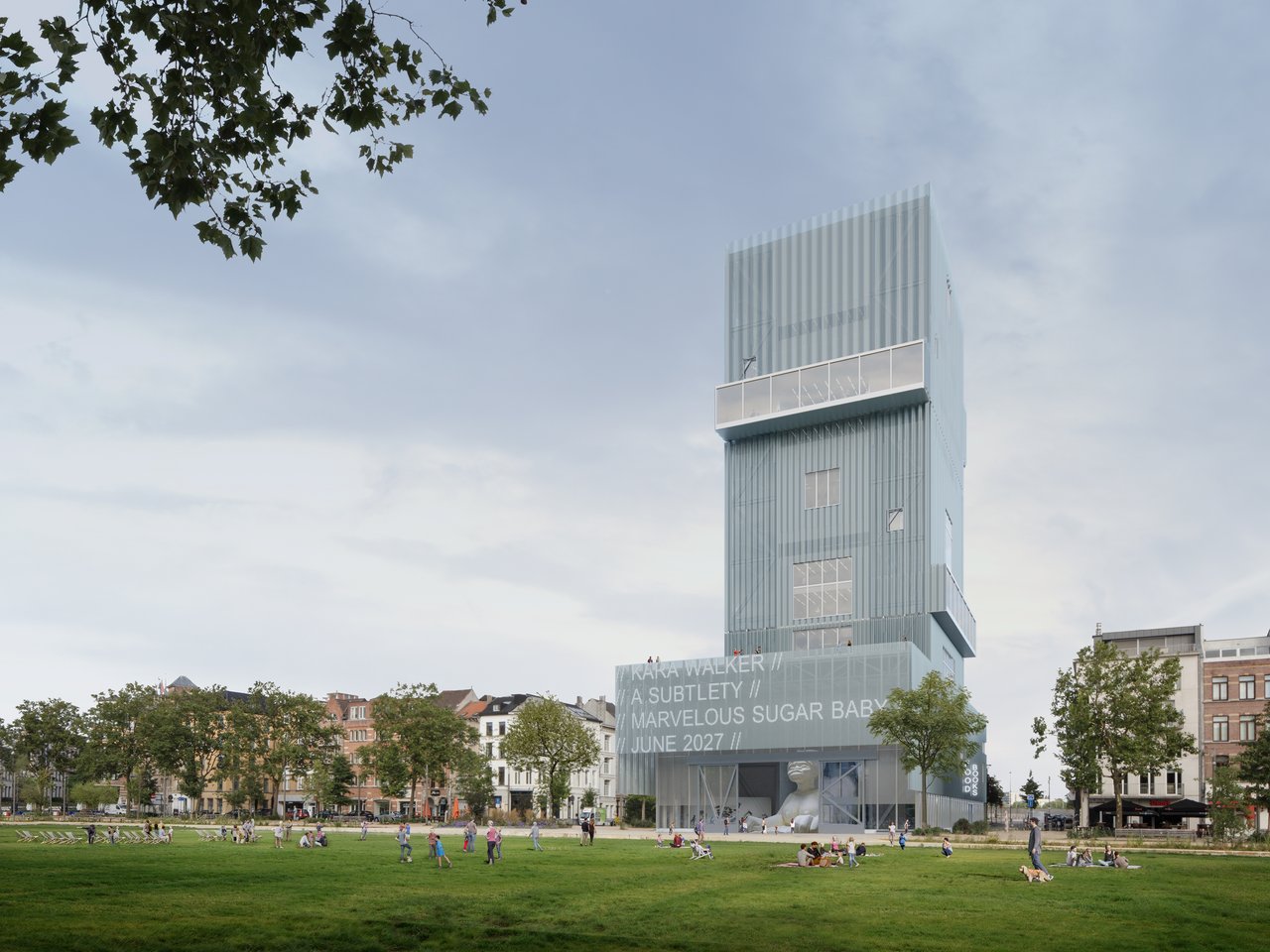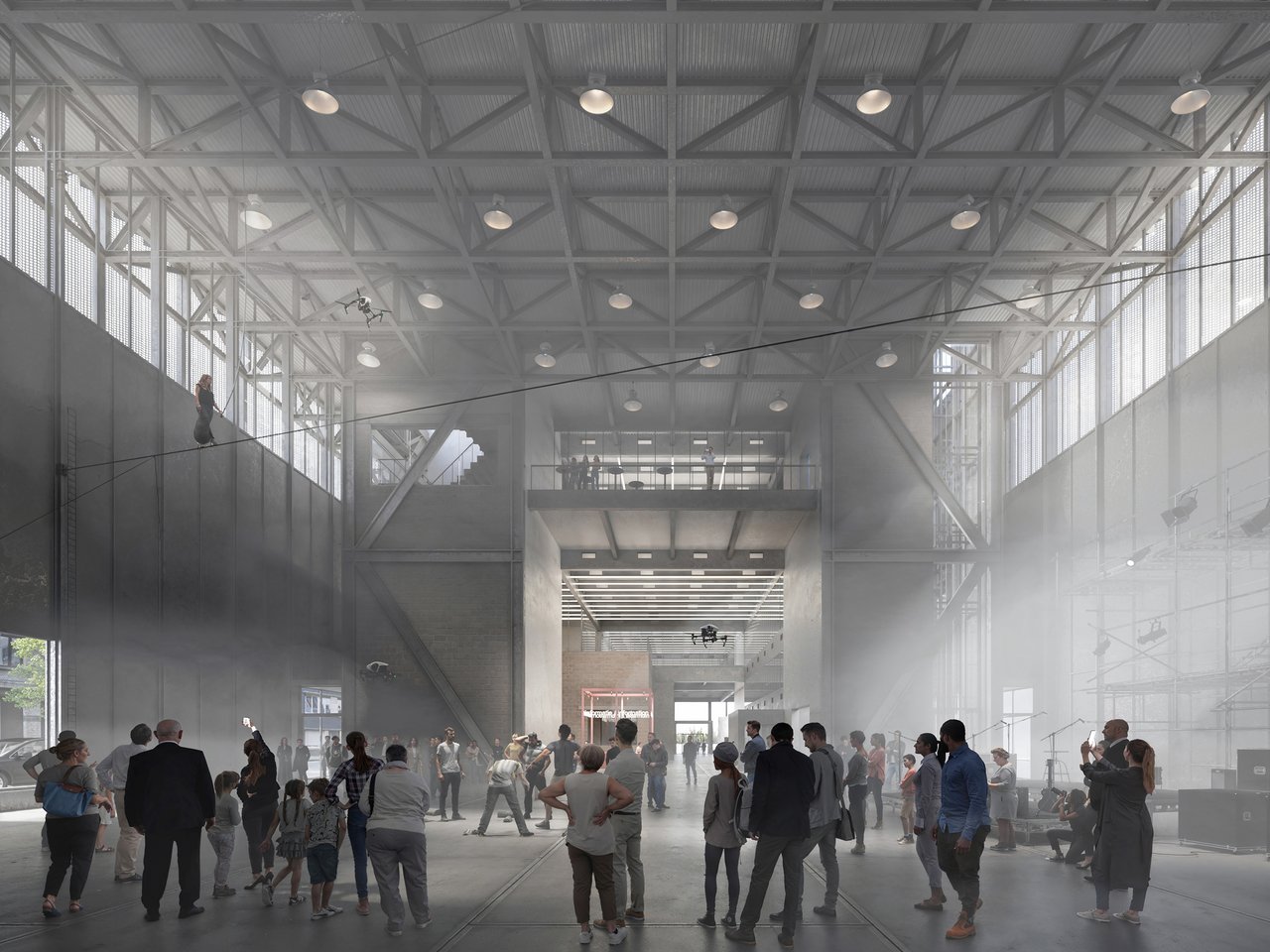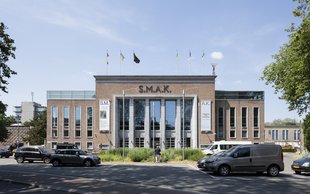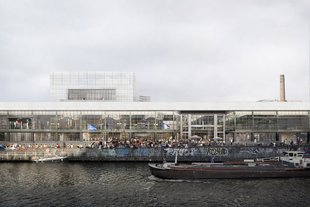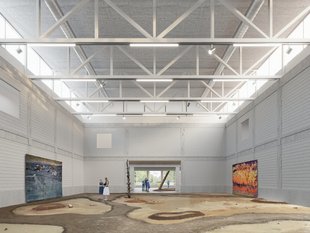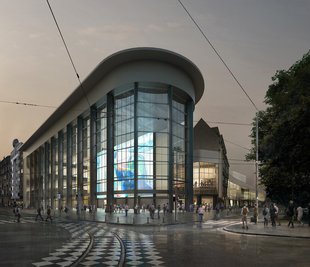If a building becomes a positive part of the collective memory, it will become part of the people
(…) Finally, the theme of representation explores how architecture can express identity and collective memory. In KANAL, the original industrial structures – steel frames, concrete floors and large glass surfaces – become part of the museum's language, evoking Brussels' manufacturing history. In the new S.M.A.K., the façades are recomposed using bricks and stones from the existing structures, while the building faces towards the Floraliënhal, creating a new urban front. The M HKA establishes itself as a new symbol of Antwerp: a perforated tower reminiscent of port silos, a recognisable landmark that combines monumentality and delicacy, projecting the city into the future without renouncing dialogue with its historical landscape.
The exhibition is structured around three key concepts identified by Philippe Viérin: agency, porosity and representation. Agency describes architecture's capacity to act and generate new social and cultural relationships. In KANAL, the former Citroën factory is reinterpreted as a civic catalyst and a place of co-production between citizens, artists and institutions. In the project for the S.M.A.K. in Ghent, the museum extends into Citadel Park, eliminating the thresholds between public space and exhibition space. Finally, the M HKA in Antwerp offers a large hangar open to the city, conceived as a contemporary agora where art and everyday life intertwine.
Porosity is central to noAarchitecten's design strategy and manifests itself as a spatial and social principle. In KANAL, the vast industrial complex is criss-crossed by new “internal roads” that connect the museum to the urban fabric and allow for a variety of uses. In the S.M.A.K. project, the museum opens up to multiple entrances and directions, entrusting part of its spaces to collectives and city associations. In the M HKA, architectural and symbolic permeability transforms the building into a lived-in infrastructure, accessible from multiple sides and capable of adapting over time to curatorial and social needs.
Finally, the theme of representation explores how architecture can express identity and collective memory. In KANAL, the original industrial structures – steel frames, concrete floors and large glass surfaces – become part of the museum's language, evoking Brussels' manufacturing history. In the new S.M.A.K., the façades are recomposed using bricks and stones from the existing structures, while the building faces towards the Floraliënhal, creating a new urban front. The M HKA establishes itself as a new symbol of Antwerp: a perforated tower reminiscent of port silos, a recognisable landmark that combines monumentality and delicacy, projecting the city into the future without renouncing dialogue with its historical landscape.
-
Exhibition invitation
PDF
-
Flyer
PDF
